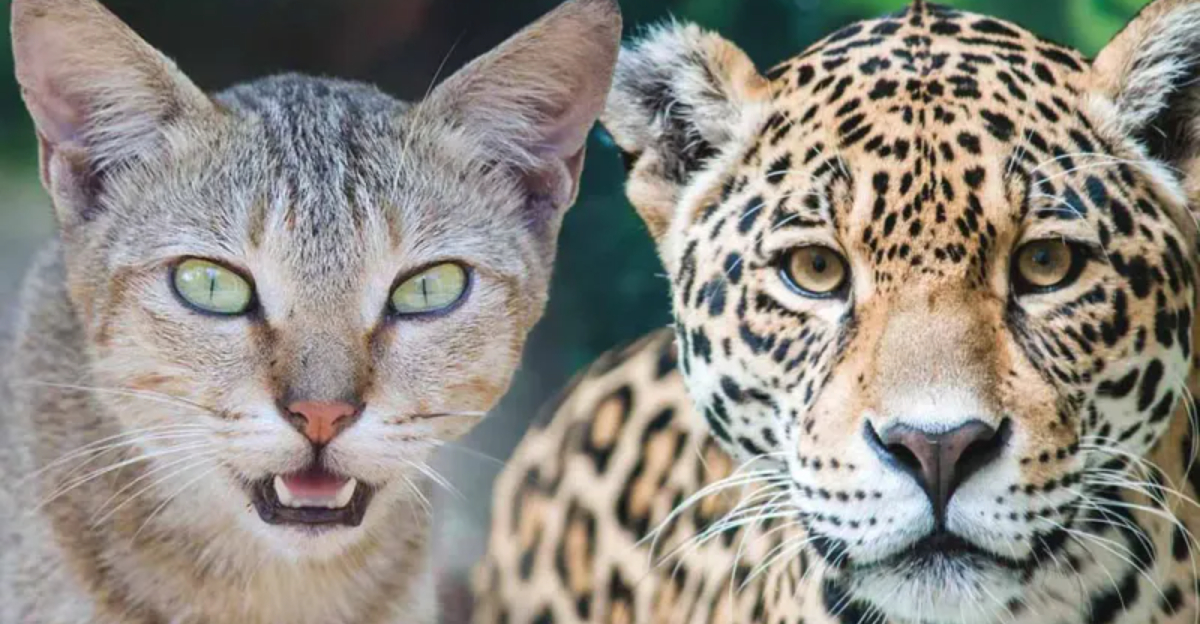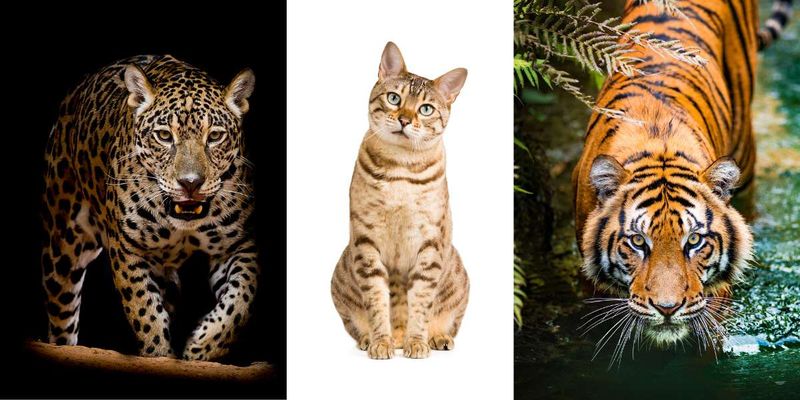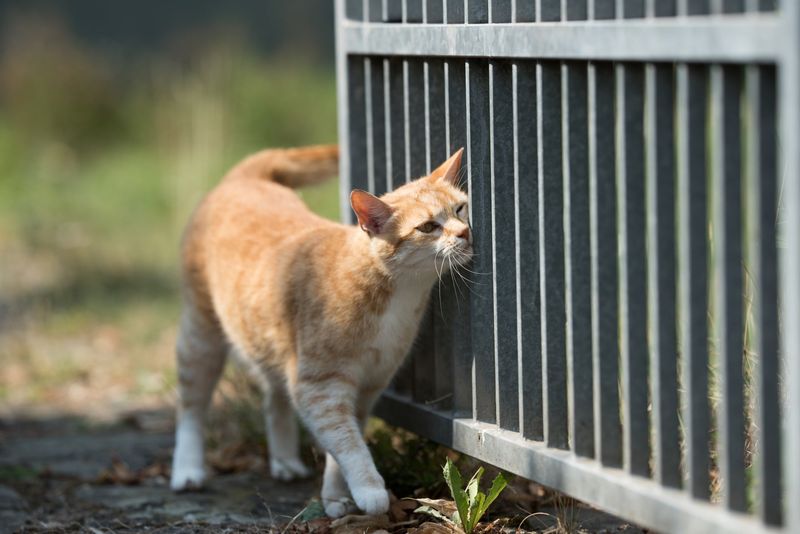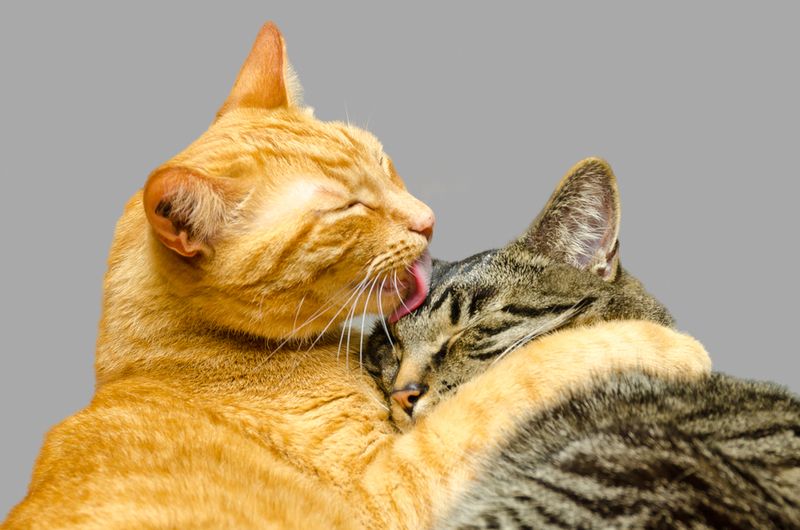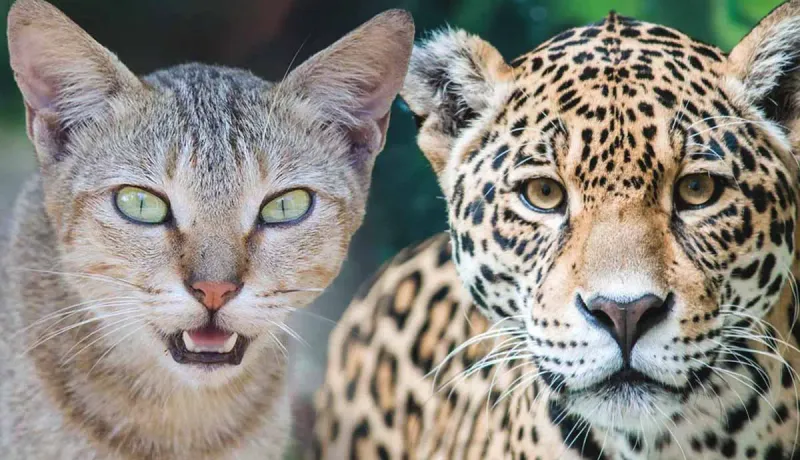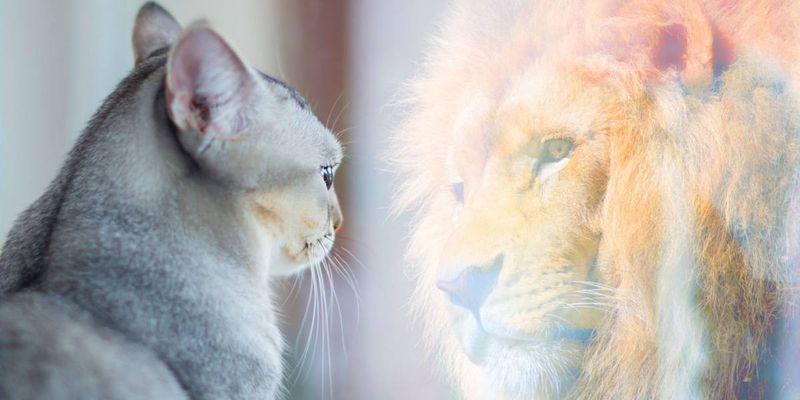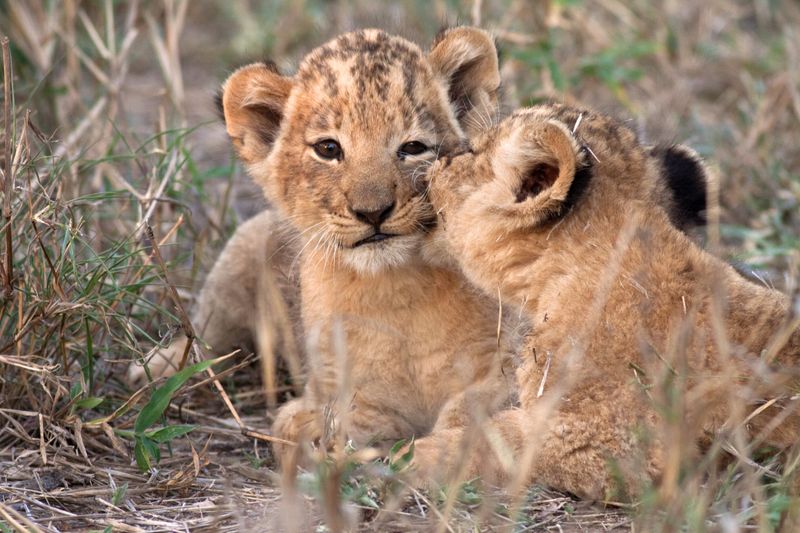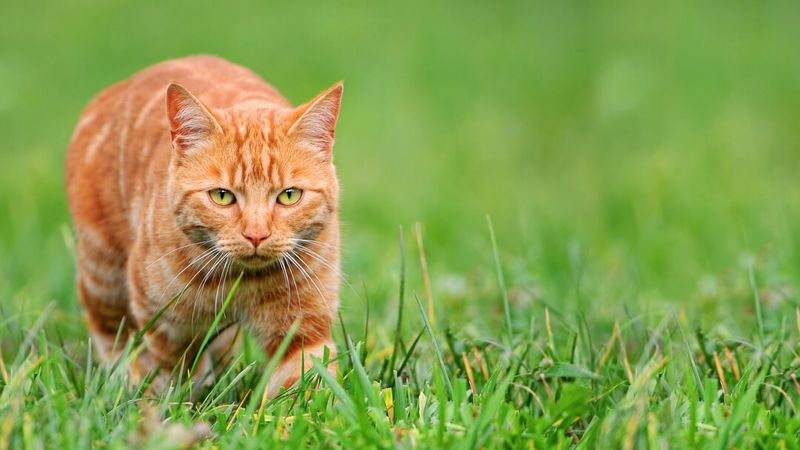📖 Table of Content:
Cats, whether domestic or wild, captivate us with their unique blend of independence and social behaviors. While domestic cats and their big cousins both belong to the Felidae family, their social structures, communication techniques, and ecological roles vary greatly. This exploration delves into the fascinating world of feline social lives, highlighting the distinct differences and surprising similarities between big cats and the petite felines that share our homes.
1. Carnivorous Diet
Cats across the spectrum, from the petite house cat to the majestic big cats, share an innate carnivorous diet. This dietary preference is essential for their health, requiring high protein intake derived primarily from meat. Domestic cats often hunt smaller prey such as mice or birds, while big cats like lions and tigers target larger animals. Interestingly, despite their size differences, all cats are adept hunters with keen senses, perfectly adapted to their roles as predators. Their shared carnivorous tendencies underscore the evolutionary link between domestic cats and their larger relatives.
2. Territorial Marking
The instinct to mark territory is deeply ingrained in both domestic and big cats, serving as a communication tool and a means of establishing dominance. Domestic cats often mark their spaces by rubbing their scent glands against household objects, creating an invisible boundary. In contrast, big cats like leopards or tigers mark their territories in the wild by scratching trees or spraying. This territorial behavior is crucial in deterring rivals and maintaining social hierarchies. Despite the difference in scale, territorial marking is a shared trait that unites cats of all sizes.
3. Grooming Habits
Grooming is more than a mere cleaning ritual for cats; it is a multifaceted behavior that serves various purposes, from hygiene to social bonding. Domestic cats meticulously groom themselves to maintain cleanliness and regulate their body temperature. Big cats, like lions, engage in social grooming, known as allogrooming, to strengthen social bonds within their prides. This mutual grooming practice fosters group cohesion and reinforces relationships. The act of grooming, whether solitary or social, is a testament to the complex social lives shared among all feline species.
4. Play Behavior
Play is an essential element of development for both domestic and big cats, crucial for honing hunting skills and social interaction. Young domestic cats often engage in playful activities such as chasing toys or wrestling with siblings. Similarly, big cat cubs, like lion cubs, practice stalking and pouncing in the wild, mimicking the hunting techniques they will need as adults. This playful behavior, while seemingly innocuous, is critical for survival. It allows young cats to develop the skills necessary for hunting and social interaction, bridging the gap between play and life skills.
5. Social Structures
While domestic cats and big cats share familial connections, their social structures diverge significantly. Domestic cats are generally solitary but may form loose colonies around abundant resources. These colonies function without a strict hierarchy, focused primarily on survival. In contrast, lions are the only big cats that live in structured social groups known as prides. These prides have complex social hierarchies, with defined roles for hunting and protection. The variance in social structures highlights the adaptability of feline species to different environmental pressures and resource availability.
6. Communication Methods
Communication in cats is as diverse as their species. Domestic cats communicate with a variety of vocalizations, including meows and purrs, primarily aimed at humans and other cats. These sounds are tailored to fit their interactions with people. Big cats, however, rely on powerful roars and growls for long-distance communication, often to establish territory or signal to rivals. This distinction in communication showcases the varying needs and environments of domestic and big cats, emphasizing how each has evolved distinct ways to convey their messages effectively.
7. Hunting Strategies
Hunting is an innate behavior that showcases the prowess of both domestic and big cats. Domestic cats typically hunt alone, relying on stealth and agility to capture small prey like rodents. Big cats, however, display a variety of hunting strategies. For instance, lions hunt cooperatively within their prides, while leopards utilize ambush tactics, often attacking from trees. These strategies reflect their unique adaptations to different environments and prey. Despite their differences, the hunting behavior of all cats demonstrates their remarkable ability to adapt and survive in diverse ecosystems.
